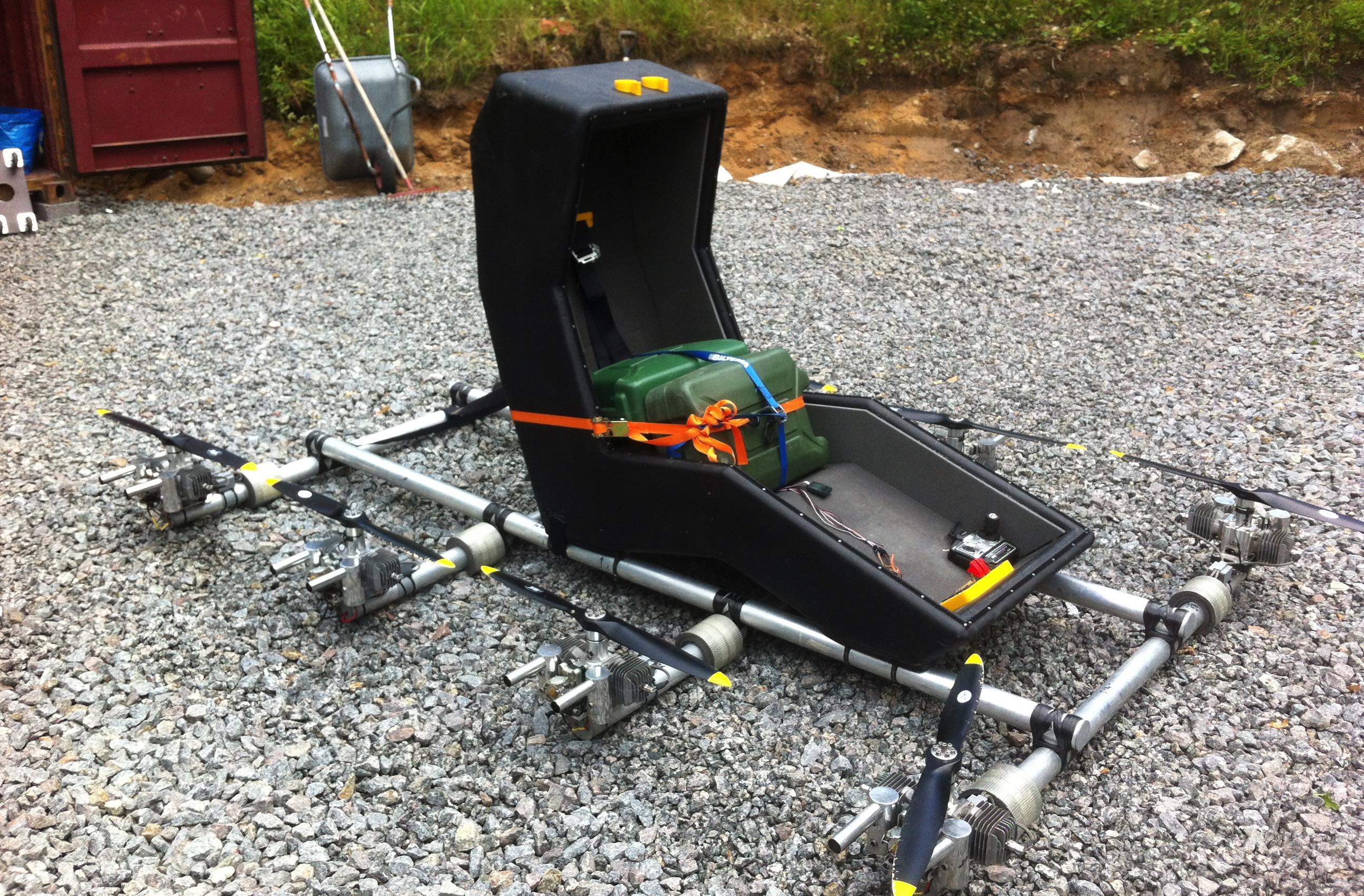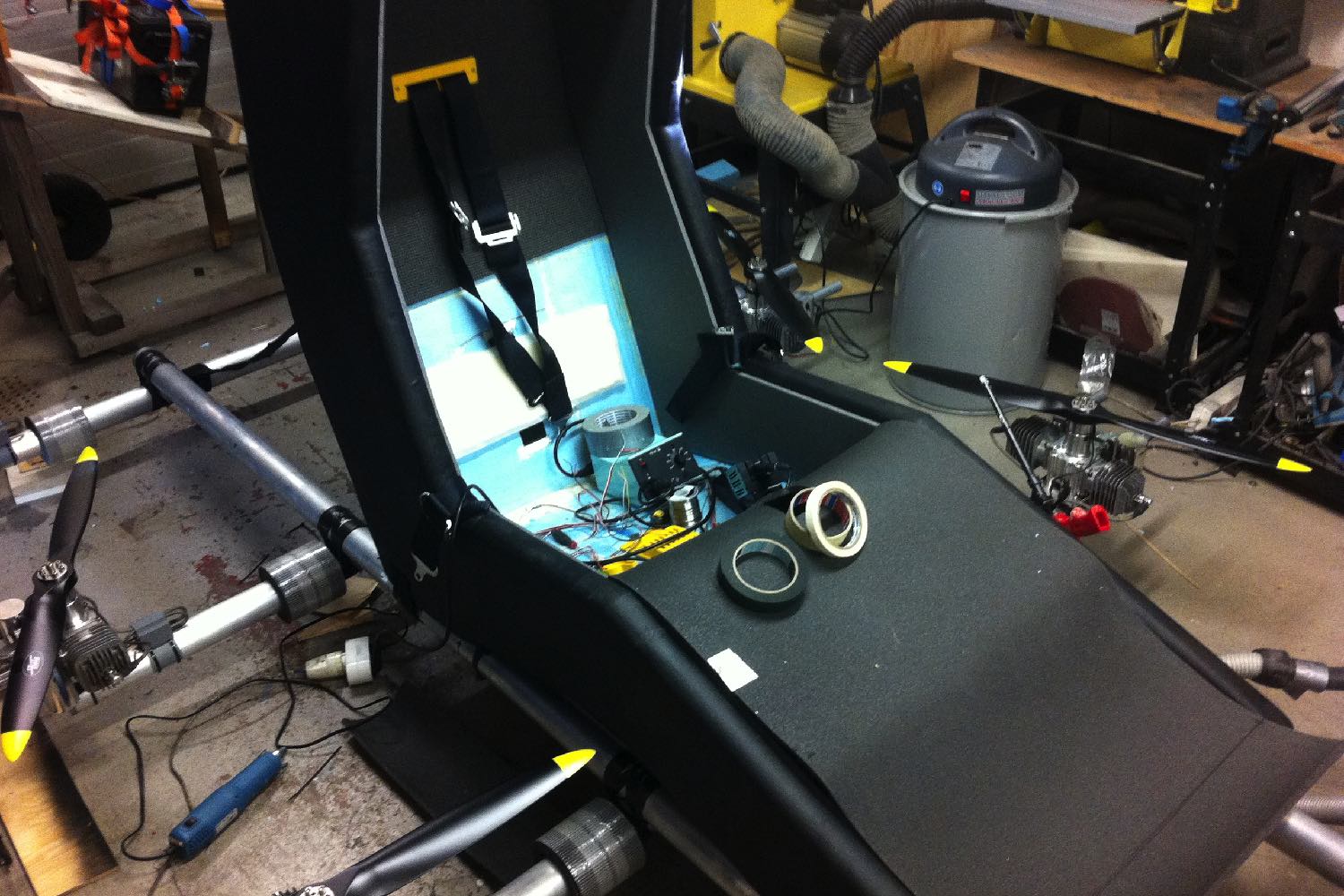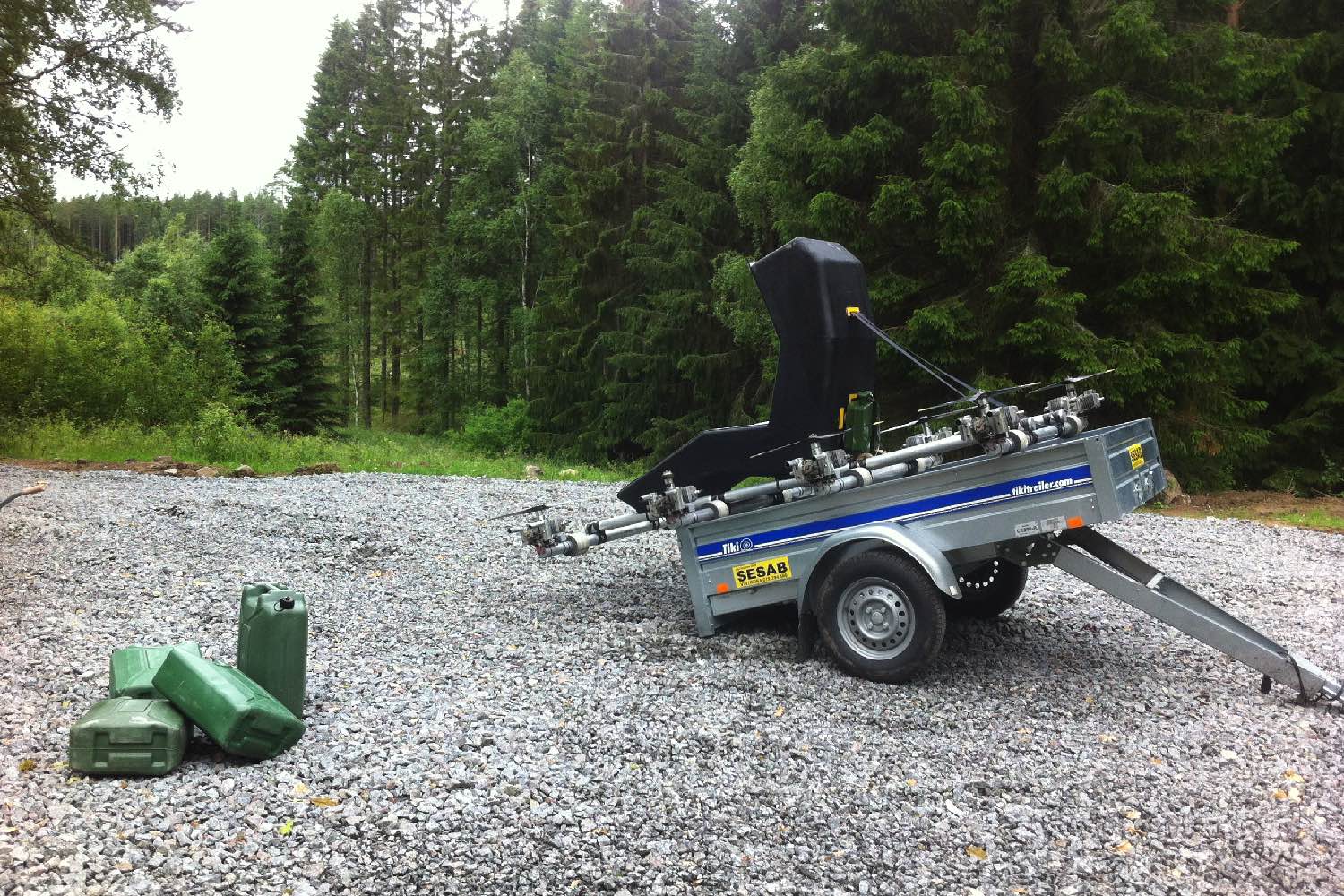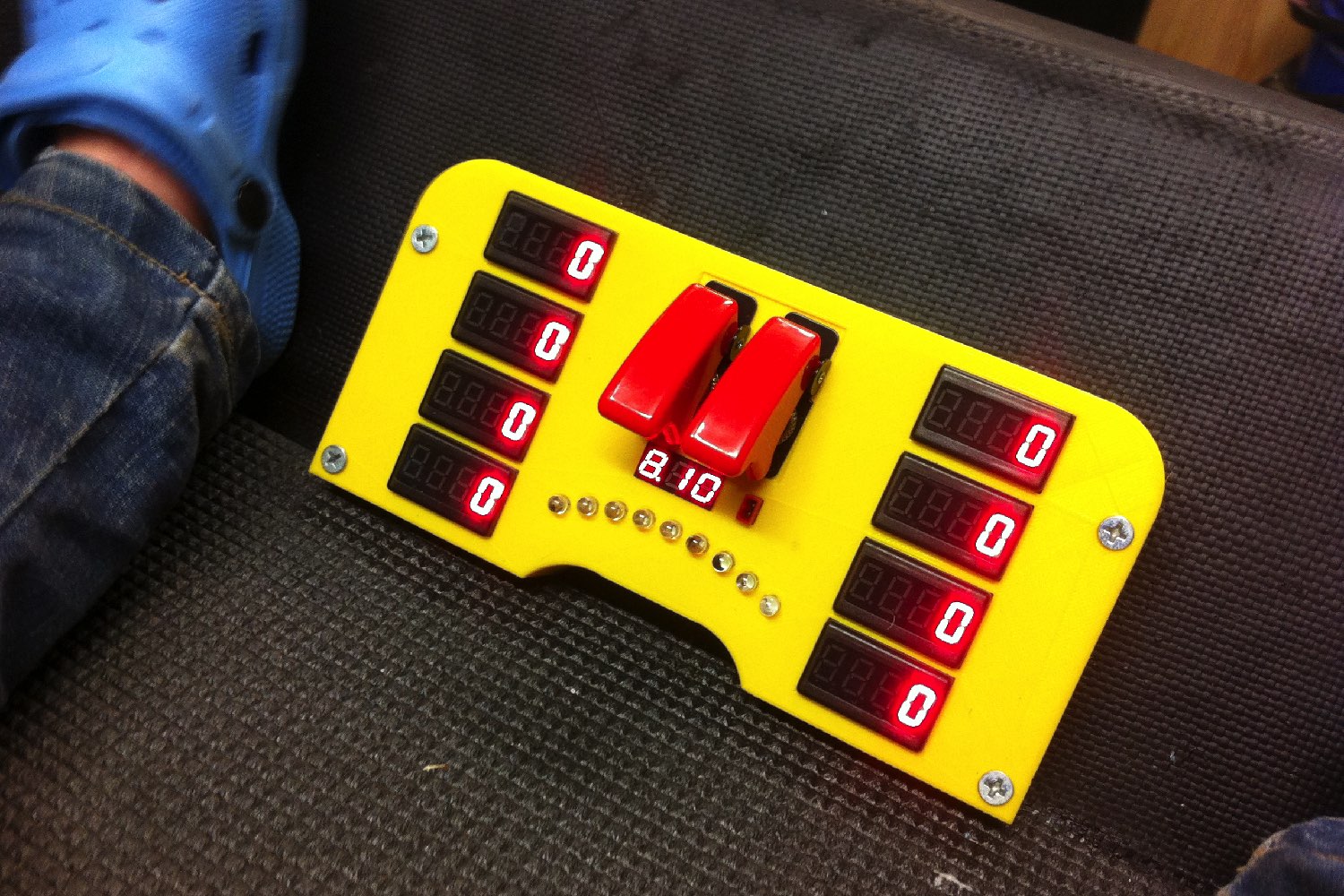Using eight petrol-powered heavy duty propellers, a tube lattice frame, a hobbyist R/C controller and a seat, Borg has assembled a pair of home-made flying multirotors. “What I have done is to combine various, easy-to-source parts and materials in order to fulfill the old pipe dream of backyard flying,” he tells Digital Trends. “I somewhere heard that every inventor’s obligation is to design and at least try to build him or herself their own flying machine. I thought that that was a funny statement and I happened to agree.”
It’s definitely a neat piece of engineering, with more than a dash of the kind of madcap early flying mishaps you’ll read about in old aviation books. The fact that it’s built by one guy makes the whole thing seem strangely within reach, too.
“I have tried to build something that makes you feel like an invisible hand taking you wherever you wish,” Borg says. “I had a few basic design criteria such as being able to haul it through an ordinary garage port without disassembling the craft and being able to drink a cup of coffee while flying” — although this latter point may have been asking a bit much.
In terms of the total cost, Borg notes that he’s spent somewhere in the region of $6,000 – $7,000, split over a six month production schedule. “Although you could do it in 2-3 weeks if you’re single, wealthy and unemployed,” he says.
Next he plans to write up as an instruction book, just as he has done with other successful DIY projects in the past. Noting the degree of danger in this project, however, he adds one final proviso: “I’ll call it ‘Don’t build your own manned multi-rotor,” he jokes.







